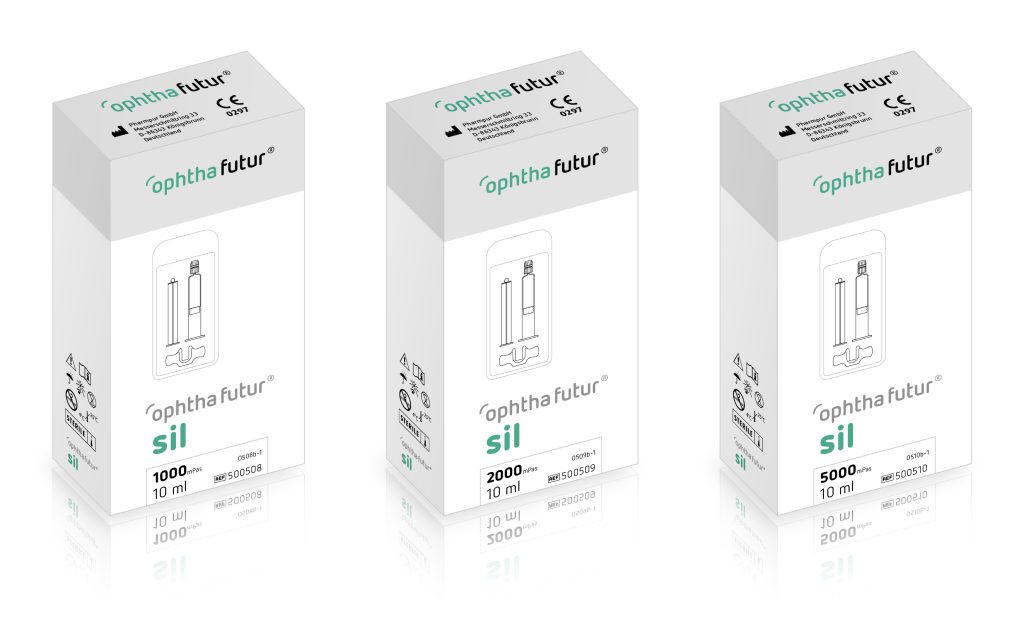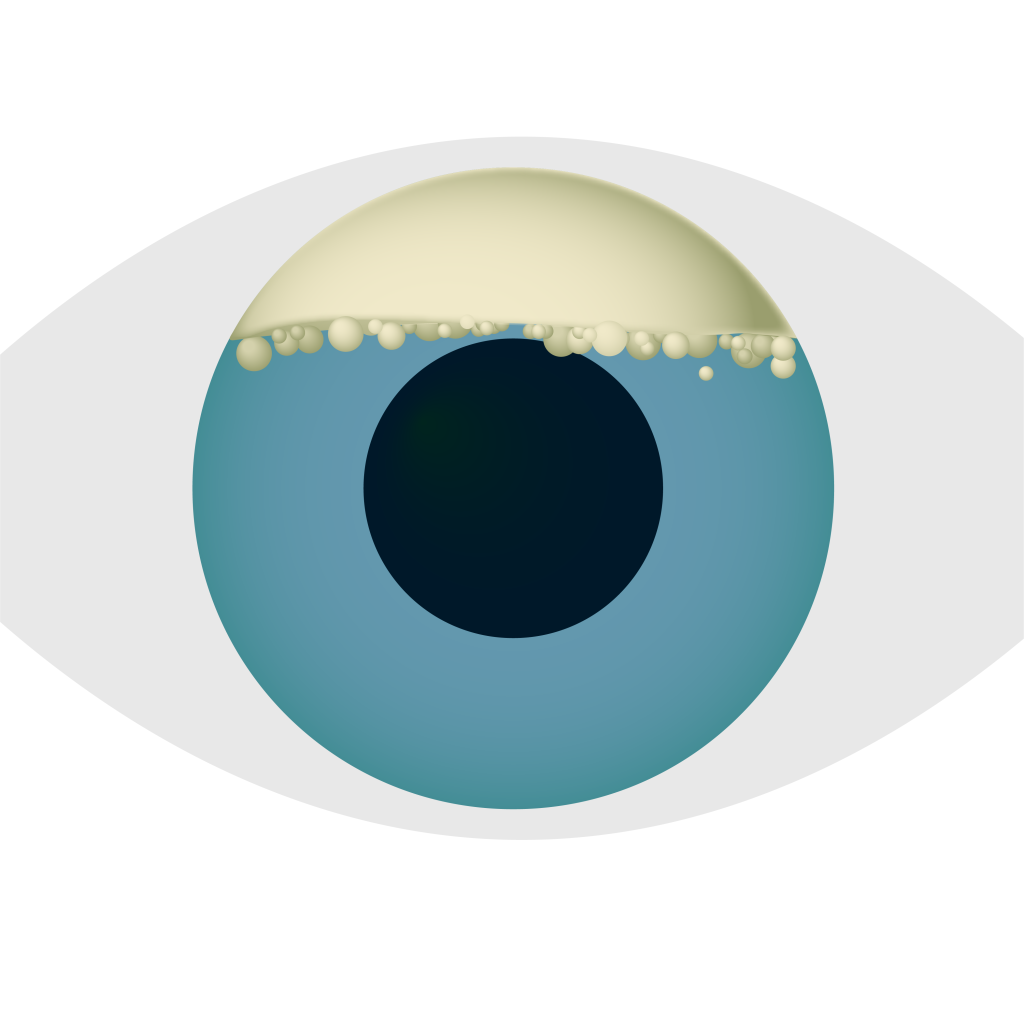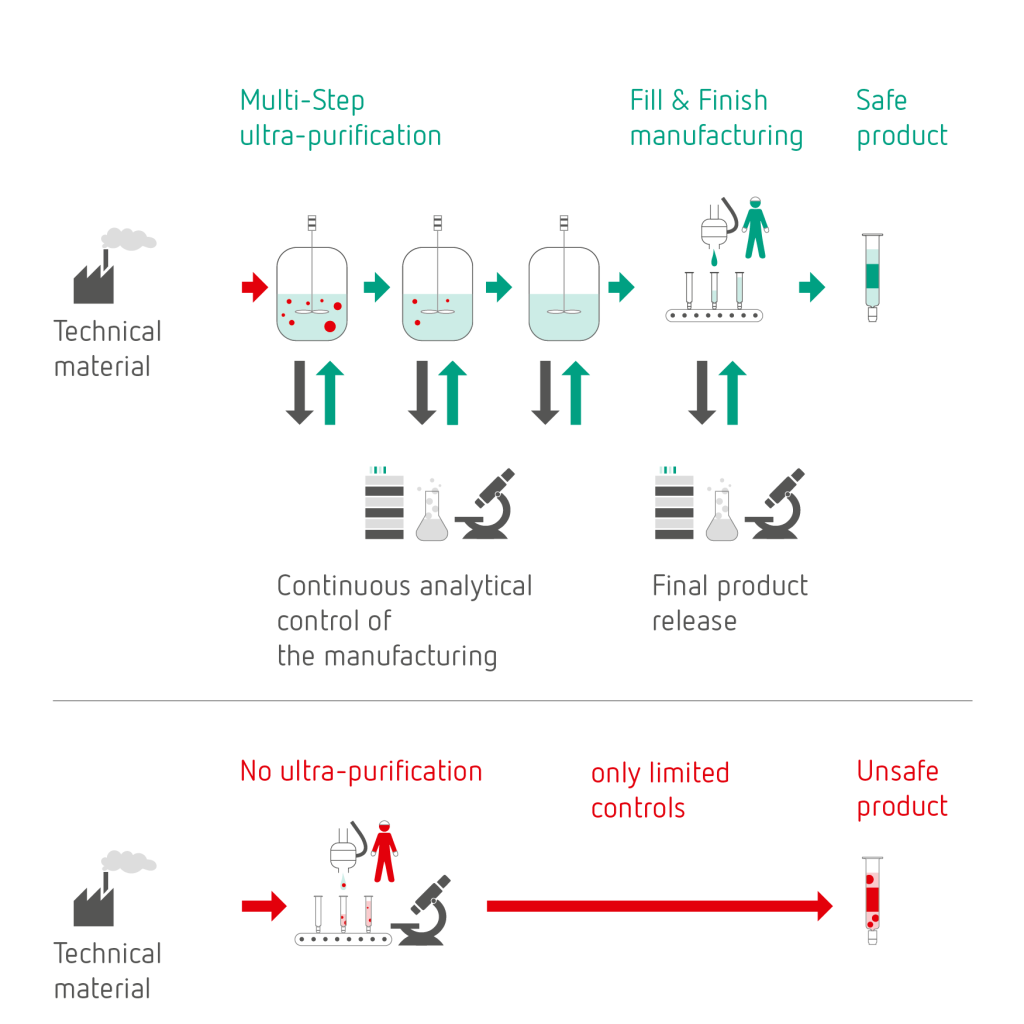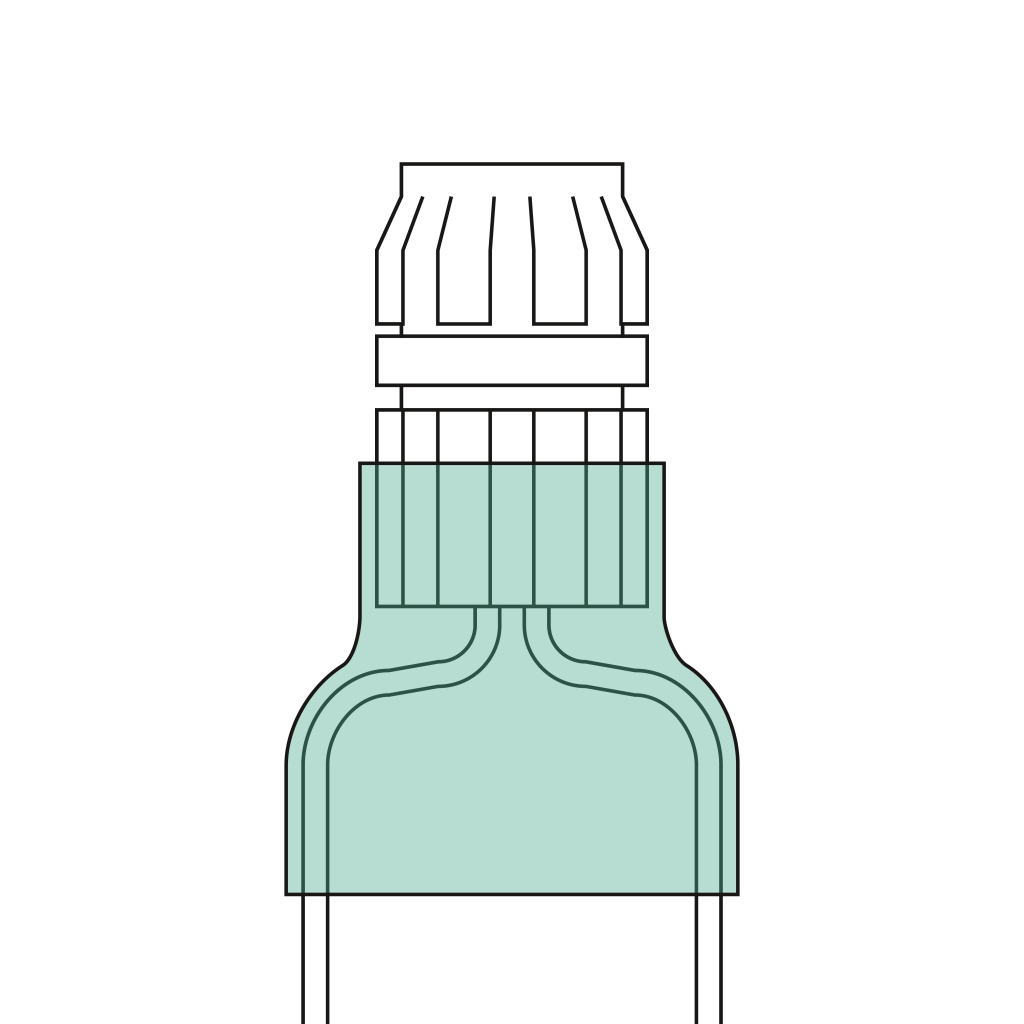ophthafutur®
sil 1000 | sil 2000 | sil 5000
Ultra-purified silicone oils for vitreoretinal surgery. Used to displace the aqueous humor from the retinal surface and to maintain the adhesion between retina and retinal pigment epithelium.
- High patient and product safety
- Validated and controlled multi-step ultra-purification process
- Safe, biocompatible, sterile, endotoxin-free products
- 36 months shelf life

What are silicone oils?
Silicone oils, also called Siloxanes or Polysiloxanes, are Silicone and Oxygen based linear polymers.
Their properties are dependent on their chain length and chain length distribution. Longer chains lead to a higher viscosity, while more defined properties are dependent on a narrow distribution.
The use of silicone oils always entails the unwanted risk of emulsification, however, the probability of occurrence of this adverse event can be dramatically lowered by using highly purified silicone oils where all volatile and non-volatile components, so-called oligosiloxanes, are removed.
The Challenge
Manufacturing-related impurities
Emulsification is a known and clinically significant complication due to its adverse effects on all ocular structures. This phenomenon, the fine distribution of small silicone oil drops provoking opacity in the interior part of the eye, is often unexplained but facilitated by oligosiloxanes and their interaction, for example, with surfactant impurities potentially deriving in their turn from the manufacturing process.
These impurities, the so-called oligosiloxanes, derive from the synthesis process of silicone oils, when polymer chains of different length are formed and result in a typical chain length distribution. Due to their size, these small cyclic and short-chain silicone oils can cause several complications, such as:
- penetration into tissues, damaging cells and causing inflammation
- interaction with other chemicals, e.g. with PFCL, leading to sticky oil
J.H. Dresp, D.H.Menz: The phenomenon of “sticky” silicone oil, Graefe’s Arch Clin Exp Ophthalmol (2007) 245:863–868 - increase the risk of emulsification and becoming a potential “trap” for further impurities.

To avoid clinical complications the removal of oligosiloxanes and further impurites is crucial!
The Solution
Validated and controlled multi-step ultra-purification process
To obtain a safe silicone oil product all manufacturing-related impurity risks need to be considered and a suitable manufacturing process, including analytical measures, needs to be implemented. This enables the detection, removal and control of all potential impurities with appropriate tools and specification limits.
ophthafutur® sil 1000 | 2000 | 5000 result from a proprietary and unique FDA-approved ultra-purification process based on a profound technical know-how, a sound risk analysis and a dense network of optimized and validated analytical methods and specification limits.
The removal of all critical impurities is consistently achieved without exceptions.
Since 1998, Pharmpur is the world-wide leading manufacturer producing ultra-purified silicone oils for ophthalmic applications.

Our purity is controlled by a combination of chemical and biological analyses:
Multi-step purification
GPC – Polydispersity comparison
Multiple purity controls
GC/MS Headspace
The outstanding quality of ophthafutur® silicone oils is also testified by independent studies.
J.H. Dresp: Benchmarking different brands of silicone oils, Graefes Arch. Clin. Exp. Ophthalmol. 2020
Usability
ophthafutur® sil 1000 | sil 2000 | sil 5000 are used as ocular endotamponades in severe cases of retinal detachment with, e.g. solid proliferative vitreoretinopathy, traumatic detachment, giant tears, as well as other detachments of the retina which cannot be treated with other forms of therapy.
The use of silicone oil in cases of central foramina with detachment, or in cases of severe diabetic retinopathies is presently discussed.
The standard glass syringe, widely used in ophthalmology, has a plastic luer lock at the tip. For added protection of the luer lock and safer handling, a supporting tube is shrunk over the tip.

For further in-depth information please contact your local distributor.







